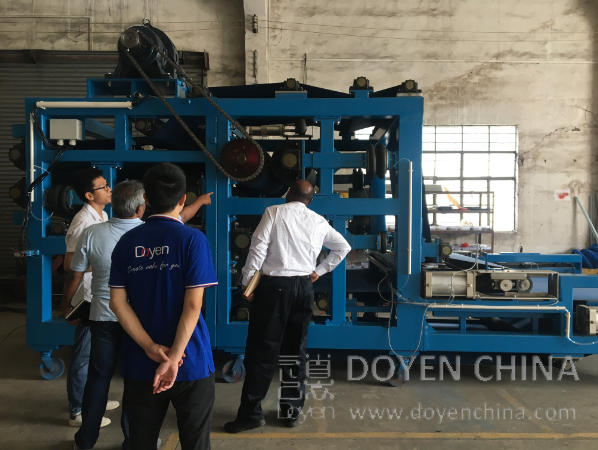

Tel:
+86-757-8633-0278
Email:doyen@doyenchina.com
Fax:+86-757-86287390
Address:Room 201, Building No. 24, Yicui Rose Garden, No. 2, Jihua 7 Road, Chancheng District, Foshan City, Guangdong Province, China 528000.
Thermal drying is to first dewater the sludge with a belt type sludge dehydrator, and use heat energy to dry the sludge. The dried sludge is granular or powdery, and its volume is only 1 / 5 ~ 1 / 4 of its original volume. Moreover, when the moisture content is below 10%, the microbial activity is inhibited and the product is prevented from mildew and odor, which is conducive to storage and transportation. The high temperature sterilization effect of the thermal drying process is very thorough. The product can completely meet the sanitary index and improve the sludge performance. The product can be used as alternative energy. However, it should be noted that the thermal drying of sludge only reduces the moisture in the sludge, and the organic matter content in the sludge does not decrease, so it is not a stabilization treatment. The energy consumption of drying treatment technology is too high, and the cost of application in printing and dyeing sludge treatment is high. If the biogas produced by anaerobic digestion in the stabilization process can be fully utilized, the biogas produced in the digestion process can be considered to assist the drying of sludge. To achieve the purpose of treating waste with waste. The advantage of sludge incineration is that it can be reduced rapidly and largely. It not only creates the conditions for solving the problem of sludge, but also consumes the energy in the sludge, and does not need to consider the inactivation of pathogenic bacteria. The heat energy of sludge incineration can be recycled, toxic pollutants are oxidized, and the activity of heavy metals in ash is greatly reduced. The disadvantages are high cost and the possibility of producing pollution exhaust gas, noise, vibration, heat and radiation. With the use of sulfur dioxide as air pollution control substances, more stringent requirements will be put forward for sludge incineration. Printing and dyeing sludge contains a large number of toxic and harmful substances. The combustion process produces more toxic and harmful gases than ordinary sludge. The combustion conditions are not easy to control and the pollutants generated are difficult to deal with It is not suitable to incinerate the printing and dyeing sludge separately because of its low calorific value and large amount of auxiliary fuel. If possible, the local municipal solid waste incineration plant can be used to incinerate the printing and dyeing sludge.


Doyen specializes in providing belt press equipment for the Southeast Asian market. Welcome to visit our workshop, according to the actual situation of your company, develop a more scientific dehydration program.Welcome to joyce@doyenchina.com or visit https://www.doyenchina.com.
Aug-04-2020
admin

 +86-757-8633-0278
+86-757-8633-0278 doyen@doyenchina.com
doyen@doyenchina.com Sitemap
Sitemap